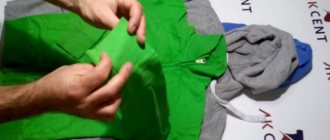Why Put Your Angora Sweater in the Freezer and Other Grooming Tricks
Caring for products made from angora is not so easy.
Perhaps you know a freezer trick that can remove chewing gum from jeans or other clothing? Did you know that your Angora sweater can be stored perfectly in the freezer? After all, at a constant temperature of 15 ° C and even lower, not only pizza and goulash are perfectly stored. The freezer can work real miracles with your other clothes. The freezer will help take care of your Angora sweaters. This saves time and promotes gentle care of the coat.
Bad smell
If your clothes smell of grease, smoke or perfume, you can place them in the freezer overnight. By the way, this applies not only to angora sweaters, but also to all other fabrics. Low temperatures ensure that the odor is easily removed. Sweaters, scarves, caps, gloves, shirts and even jeans can be placed in the freezer.
The fluff is flying
Is fluff coming out of your sweater after the first wear? Place it in a plastic bag and put it in the freezer for a few hours. Exposure to cold air causes the fibers to be held much better in the yarn. The result: significantly less lint.
Tip: This technique works for all long-haired fibers, such as mohair.
The wool is matted
Use a machine to remove pellets. Make sure you don't press too hard to avoid cutting your clothing. This method only works well for short pile fabrics.
Tip: You can use the cheapest disposable razors.
Arrows on tights.
Are you worried that your tights tear quickly? If so, place them in the freezer overnight. The cold tightens the fibers of the tights and makes them stronger. Arrows will form much less frequently.
Another horror: candle wax.
If you find a wax stain on your angora sweater or favorite shirt, the refrigerator will also help you. Just keep things in the freezer until the wax hardens. Now the rough stain can be easily removed from the fabric.
Tip: If there is any wax residue left, you can carefully remove it using blotting paper and an iron.
>>>Subscribe to the channel, like ✔️ This is very important ❤️ See more interesting articles on our official website:
Source
Hand and machine washable
In relation to items made of delicate knitwear, you should be guided by the following rule: the less rabbit fluff they contain, the easier they are to care for. Therefore, when choosing a washing method, first of all, you should pay attention to the composition of the fabric and the manufacturer’s recommendations.
You can only wash products containing 10-50% angora. Premium items made from natural fiber are taken to professional dry cleaning 1-2 times a year.
Models that are not harmed by contact with water are best washed in a gentle way, that is, by hand. In this case, it is necessary to follow the following procedure:
- The product is turned inside out. The loops on the jacket and coat are sewn up with a temporary seam, and the voluminous collar is sewn to the main fabric of the sweater in the same way. If this is not done, these parts will stretch.
- Water is poured into the washing container. Its temperature should not exceed 40° (optimally 30-35°). In hotter water, textiles will shrink significantly and the pile will fall off.
- The selected detergent is dissolved in a basin, then the knitted item is immersed in it. Soaking time should not exceed 15 minutes. The exception is when the model needs to be bleached. Then it is left in the liquid for several hours.
- Even with high-quality twisting of the angora thread, it climbs a lot. To minimize this process during washing, the product should not be rubbed with your hands. It is lightly squeezed with your palms in different places, turning it over from time to time.
- Rinse a clean model several times, changing the water. The temperature of the rinse water should not differ from that selected for the main wash. During the last rinse, industrial conditioner or glycerin (1 tsp) is poured into the basin.
- The product is placed in an empty container and wait until most of the water has drained. Squeezing and twisting the fabric is prohibited.
When processing angora in a washing machine, you must follow the following rules:
- Prepare the product in the same way as for hand washing, carefully fold it and place it in a mesh bag. Only after that put it in the drum.
- Pour liquid detergent and conditioner into the machine's ditch.
- On the panel, select the “wool” or “delicate wash” mode. Disable “drying” and “spin”.
- Remove the clean item from the net and let it drain in an empty container.
An angora jacket fits, what should I do?
How to wash an angora sweater
Among lovers of cozy things, despite the rather high price, products made from natural angora, a woolen fabric based on the fluff of certain breeds of Angora rabbit or goat, are popular. And there is a simple explanation for this. Thanks to the properties that create an unsurpassed feeling of warmth and care, clothing made from this fabric is quite highly valued and occupies a worthy position in the market.
When purchasing such a wonderful, delicate and fluffy thing as an angora sweater, the last thing any buyer thinks about is how he will wash and care for it in the future. After all, the product is new and it is literally permeated with airiness and affection, but over time, such a product loses its consumer qualities and original luster. Pills form on the sweater, the fluffiness loses volume, and the fibers stick together and what we see is completely different from what we bought. But don't despair!
Important! If you follow the recommendations described below, you can easily restore the original appearance and sophistication of your favorite item.
Where is angora fabric used?
Angora is used to make clothes for children and adults: dresses, skirts, sweaters, coats, suits, hats, scarves and mittens. The most popular product is socks. They are comfortable to wear with winter shoes. They are thin and the boots don’t feel tight like regular wool socks. The items are thin, but very warm. They are pleasant for northern residents to wear so as not to wear many layers of clothing. It is more convenient for children to play and move, especially in the winter season.
Read about: what is better to choose poplin or satin for linen.
A blanket, shawl or stole made of angora will add warmth and comfort. Needlewomen purchase yarn to create warm, openwork clothing items. Angora-based knitwear is often purchased for children.
In combination with other types of wool fibers, this wool is used to make curtains, upholstery for armchairs and sofas, and pillows.
Before you buy an angora item, you need to request a certificate. A good store will provide it without any problems. Then the possibility of purchasing an artificial thing will be excluded.
Handwash
For impeccable washing, we need any baby soap, preferably white and without additional dyes and creams, as well as glycerin, which is sold at any nearby pharmacy or specialized soap making store.
Important! It is not recommended to use conventional washing powders, aggressive agents and bleaches.
Even despite the advertising specifications, which indicate that they are intended for such material, you can ruin the thing.
For reference! Soap can be replaced with regular baby shampoo, but this risks creating too much foam during washing and then removing it will be very problematic, so it’s better to opt for soap.
Then we collect water into the container where we will do the washing; the water temperature should not exceed forty degrees, and preferably in the range of 36–37. It’s easy to check even without a thermometer, just drop some water on the back of your wrist and if you feel a difference, you just need to adjust the temperature by adding warm or cold water.
What to wash
If you decide to clean things made from Angora wool at home, you should take care in choosing a detergent. What is suitable for washing this knitted fabric?
To give a beret, sweater or angora hat softness and prevent the delicate pile from matting, you need to take care of special rinsing products. This could be: conditioner for wool or hair, glycerin.
It should be remembered that when washing angora, it is extremely undesirable or strictly forbidden to use some household chemicals. Among them:
The main stage is drying
But the most important and responsible stage, both in hand washing and using a machine, is the correct and safe drying of your product.
Important! It is strictly forbidden to hang a damp sweater on various ropes, dryers and other household appliances. Also, do not rush the drying process of the sweater by placing it near heating devices or radiators.
To begin, we take a large, dry terry towel with large pile and wrap our wet sweater in it, doing this carefully and accurately. And we wait for the towel to absorb the excess moisture. And only then we carefully lay out our product on a flat horizontal surface, preferably with a fresh, dry terry towel on it. Thanks to such a long and difficult drying procedure, we will return the presentable appearance of the sweater that it had when purchased.
Restoring angora clothing
Even if a jacket or other clothing has lost its appearance, you can try to restore it. To do this, do not rush to the store for special expensive products. The most effective formulations can be found in every home.
How to wash an angora sweater to restore its softness and fluffiness:
- Freezer. This is the simplest method that does not require additional investment. The angora sweater should be placed in a clean plastic bag and placed in the freezer. Leave it there overnight. After this, lay the clothes out on a horizontal surface and let them warm up to room temperature. This extreme method will restore elasticity and shine to the fibers.
- Glycerol. It is better to purchase it immediately along with angora clothing. While rinsing, add 1 teaspoon of product to the water. It is recommended to repeat this procedure every time you wash.
- Turpentine and ammonia. Fill a bucket with warm water. Grate half a bar of laundry soap on a coarse grater and dissolve in water. Add 1 tbsp to soapy water. l turpentine and 2 tbsp. l ammonia. Soak the jacket overnight. It is not recommended to keep the product for longer than 12 hours. After this, rinse with an appropriate conditioner and dry.
- Ammonia and medical alcohol. It is necessary to dissolve 1 cup of soap shavings in a bucket of warm water. Stir and add 15 ml of ammonia and 5 ml of pure medical alcohol. Soak clothes. After 10-12 hours, remove the product, remove excess moisture, and dry a little with a terry towel. Lay the jacket out on the table and cover the top with a thin cotton cloth. Iron and finish drying.
After final drying, the items should be combed with a wide-toothed brush.
Comments
“Network publication “Woman’sDay.ru (Woman’sDey.ru)” Certificate of registration of mass media EL No. FS77-67790, issued by the Federal Service for Supervision of Communications, Information Technologies and Mass Communications (Roskomnadzor) December 13, 2016 16+.
Founder: limited liability company "Hirst Shkulev Publishing"
Editor-in-Chief: Dudina Victoria Zhorzhevna
Copyright (c) Hirst Shkulev Publishing LLC, 2022.
Any reproduction of site materials without the permission of the editors is prohibited.
Contact information for government agencies (including Roskomnadzor):
Source
How to dry mohair and can it be ironed?
An item hung on a rope, hanger or the back of a chair will stretch out, but the mark of the fold will remain on it.
Mohair should only be dried in a horizontal position.
Ironing fabric, especially openwork knitted fabric, is highly discouraged. If there is an urgent need for this, the model is turned inside out and processed with an iron set to minimum power through a thin fabric. But there are many ways to iron things without an iron; for example, a steam bath is suitable for sweaters and other mohair items.
What to do if the fabric fades a lot?
Pour 2 liters of cold water into a basin, add 6 tablespoons of vinegar and salt. A light terry towel is laid on the bottom, and a product that sheds
. You need to stand for 3 hours. Then squeeze and hang without rinsing.
Interesting materials:
What could be the position of the fetus? What social status might there be? What punishment can there be for a fight? What animal cannot breathe through its mouth? What color can bags for Class B waste be? What color can the certificate be? What color can a sunset be? What administrative fine can be imposed on citizens for violating fire safety requirements? What kind of person cannot be considered unemployed? What is the maximum probationary period that can be established for the head of an educational organization?
how to deal with angora?
They gave me a knitted dress with angora. it’s beautiful, warm, but it’s an infection. everything around is covered in wool! Maybe someone knows the magic secret of how I can tame this angora? Can I wash it somehow in a special way?!
I, too, once, when I was studying at the institute, had an angora blouse, a very fine industrial knit, so fluffy, fluffy, cozy, soft. But she also climbed in a terrible way, you run your hand over it and your whole hand is covered in fluff. Only because of this I very rarely wore it. And I also bought angora gloves. When you take them off, your hands are covered in hairs. Terribly inconvenient.
Most likely, the knitting technology was really incorrect or the yarn was not of the best quality. Although I really liked the look and feel.
I'm still afraid to buy it or knit something from it
It’s usually the “excess” that sticks out that doesn’t stick well. It's like the excess dye that comes off the yarn the first time you wash it.
THIS IS NOT ANGORA. Turkey simply called the thread “angora” and it does not contain anything close to rabbit fluff.
The label clearly states: 30% mohair, 70% acrylic/60% angora, 30% acrylic, etc.
the composition of angora rabbits is usually written as % rabbit fluff. and this is simply misleading. Angora type. I can assume that there is wool from an Angora goat, of course.
The author does not specify what is meant by angora in her case
And rabbit fluff creeps in, yes.
yeah...and they write cashmere...on a skein for a maximum of 200 rubles.
or on the label “Kashmir(s)”, but the composition is simply “wool”
Cleaning methods
- If the wool is not very dirty, you can clean it using the dry cleaning method. But here you need to know that not all chemicals are suitable for cleaning it. Sometimes it is enough to treat a separate stain with a cotton swab and a soap solution warm to 30°C. Then rinse with clean water and blot the area on both sides with a terry towel. After cleaning, the product must be laid out on a cloth for subsequent drying.
IMPORTANT! Do not try to dry the treated wet area with a hair dryer.
- If the item requires special cleaning, you can contact a dry cleaner, but know that they will not give you a guarantee that the wool will not lose its appearance.
- If you decide to wash your mohair yourself, you can use either the hand washing method or the washing machine. But to do this, you need to know a few rules that will prevent you from ruining an expensive item.











